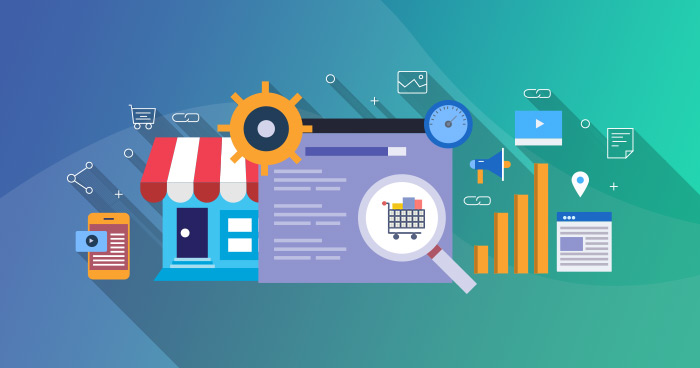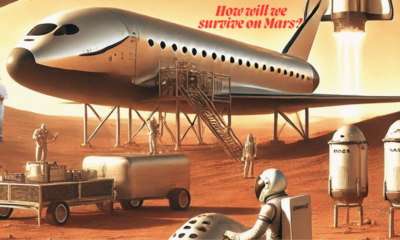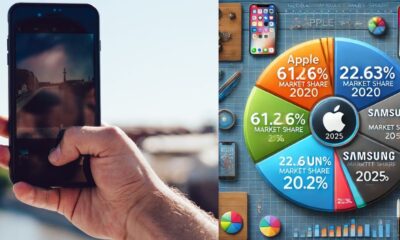Technology
Accelerate the growth of your business through on-demand Food delivery app

The world is changing rapidly: while modern consumers seek convenience and time savings, on-demand meal delivery apps have become increasingly popular. People would prefer to purchase food online than waste time and energy preparing meals. Furthermore, modern meal delivery services offer a diverse choice of cuisines and customization possibilities, allowing customers to select nutritious food that suits their preferences, resulting in an increase in demand. For good reason you can look for the best swiggy clone, technology has changed practically every area of our lives. We use the internet to the bank, play games, and learn. Even when we are hungry, we prefer to have food brought to our door!
While consumers continue to adhere to social distance standards, internet food apps continue to service a huge client base by providing safer and faster delivery. To avoid catching the coronavirus, customers turned to online apps. This conduct has fundamentally altered the landscape of meal delivery apps. It has aided in the survival of enterprises during the pandemic. According to a recent Statista survey, 41.7 percent of adults in the United States favor online meal ordering and delivery services. This was mostly due to worries about health and safety, as well as convenience.
Developing Your Delivery App necessitates a great deal of planning.
The customer version of the delivery software, the restaurant version, and the delivery agent version of the delivery software is the first three parts to consider when developing a delivery app. Each version has its own set of considerations and features that necessitate meticulous planning and requirement mapping. There are a range of features to investigate, including live order tracking, a variety of payment alternatives, and smooth delivery execution. Using a delivery app builder or best swiggy clone to construct your delivery app with built-in functionality and vast experience dealing with various online delivery software firms makes this stage of your business development go much more smoothly.
Choose a Business Model. As You Begin to Build Your Delivery App
When developing a grocery delivery app or food delivery software, it’s important to consider the type of business model you’ll be using. There are two types of business models: one is the traditional business model and the other is the new business model.
- Third-party companies that link restaurants and consumers are referred to as aggregators in this paradigm. Zomato is a wonderful illustration of this type of business approach.
- Software for logistics: These apps assist restaurants with their logistical needs. This model is used by the best swiggy clone and UberEats, for example.
Consider which model is best for you when developing a meal delivery service, and build your software and marketing accordingly. This clarifies the steps involved in creating your delivery app right now.
Collaboration
One of the most difficult obstacles to overcome in the meal delivery sector is forming partnerships with restaurants. It can be difficult to form partnerships with well-known brands or even with current and new eateries. It’s difficult to persuade them to collaborate with you and to comprehend your business goals. However, if you already have a strategy in place for moving forward in this business, dealing with such challenges will be a breeze. The best method to handle this problem is to attract restaurants by introducing some exclusive bargains, offers, and discounts.
Furthermore, you can rely on your branded on-demand food delivery app to support your business by providing reliable and scalable features that allow you to take advantage of these specials and discounts on time. Because your app makes it simple to contact you, there will be no resistance when eateries try to partner with you. As a result, prepare a solid food delivery app and web solutions.
User Retention and Acquisition
Customers are critical to the success of any firm, and repeat business validates your business strategy. Starting locally, using social media and word-of-mouth to market your app, as well as delivering fantastic perks and incentives to restaurants and consumers, will ensure that your users are addicted to your app. In this case, your delivery management tool can help a lot. While developing a food delivery app, data insights might help you improve your business.
As a result, you can easily move forward with the process of creating your delivery app with the help of the best swiggy clone. Route optimization, location intelligence, geo-mapping, and other technologies used by on-demand food-delivery app builders let you track, identify, and manage any obstacles to your business while making it more cost-effective, user-friendly, and technologically best-in-class.
Managing Logistics
When you’re starting in the food delivery industry, you’ll confront a variety of obstacles. However, an on-demand food delivery service might be the best way to deal with this. Delivering goods to far-flung areas, managing on-time deliveries, tracking delivery agent performance, the number of trucks required, and so on are all issues that logistic management faces. It is necessary to ensure that everything is trustworthy, as well as to manage logistics.
As a result, developing your on-demand meal delivery app could be the most effective way to make things run smoothly for you. It will be beneficial to provide proper training, educate delivery agents on food packaging rules, and make them more familiar with industry guidelines. You can always add exclusive features like position tracker, geo-fencing, and tracking deliveries to make the process go more smoothly for you.
One of the most important aspects of a meal delivery business is an on-demand food delivery app. Customers will be delighted if they can use all of the essential features in the app and web solutions. Furthermore, this was the road map for developing an on-demand food delivery app like the best swiggy clone, which will assist you in seamlessly sustaining your food delivery in 2020 and beyond.
-

 Business5 days ago
Business5 days agoS&P 500 Soars in Best May in Decades Amid Tariff Relief and Nvidia’s Surge
-

 Healthcare6 days ago
Healthcare6 days agoAttention Economy Arms Race: Reclaim Your Focus in a World Designed to Distract You
-

 Immigration5 days ago
Immigration5 days agoTrump’s Immigration Crackdown: Legal Battles and Policy Shifts
-

 Business5 days ago
Business5 days agoUS Stock Market Soars in May Amidst Tariff Tensions and Inflation Worries
-

 Government5 days ago
Government5 days agoTrump Administration’s Government Reshaping Efforts Face Criticism and Legal Battles
-

 Business5 days ago
Business5 days agoTrump’s Tariffs: A Global Economic Reckoning
-

 Foreign Policy2 days ago
Foreign Policy2 days agoInside Schedule F: Will Trump’s Federal Workforce Shake-Up Undermine Democracy?
-

 Press Release2 days ago
Press Release2 days agoIn2space Launches Campaign to Make Space Travel Accessible for All






























